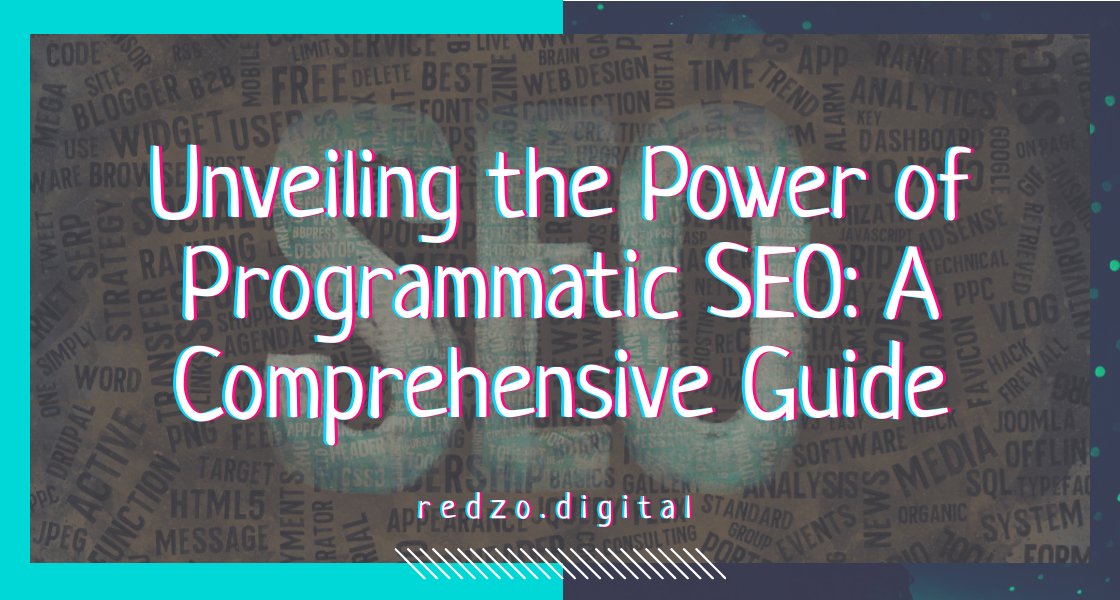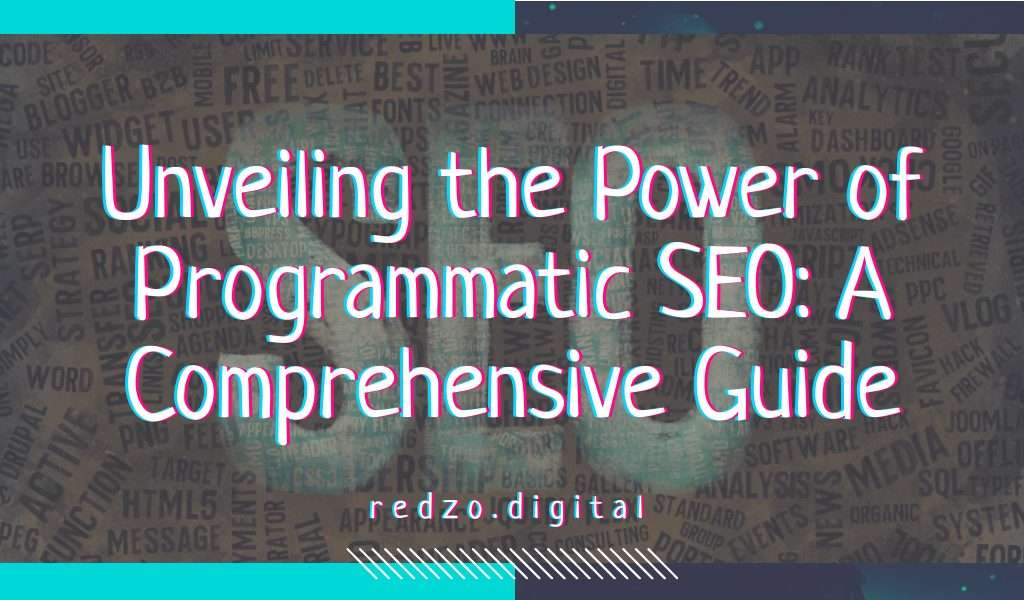Programmatic SEO is a smart tactic to optimise websites for search engines. It uses automated software and data analysis to detect and put in play successful SEO plans. By using tech, programmatic SEO assists businesses to improve their web visibility, get specific traffic and increase conversions. As the rivalry rises in the digital sphere, regular SEO approaches may not be enough. Programmatic SEO steps in by giving a more intricate and effective manner of site optimisation.


Programmatic SEO is a smart tactic to optimise websites for search engines. It uses automated software and data analysis to detect and put in play successful SEO plans. By using tech, programmatic SEO assists businesses to improve their web visibility, get specific traffic and increase conversions.
As the rivalry rises in the digital sphere, regular SEO approaches may not be enough. Programmatic SEO steps in by giving a more intricate and effective manner of site optimisation. Unlike manual optimising, programmatic SEO uses advanced algos and machine learning to analyse loads of data in real-time. This permits marketers to spot trends, patterns and customer behaviour to make informed decisions about their SEO plans.
A major benefit of programmatic SEO is its capability to automate dull tasks. Utilising specialised software, marketers can automatically generate meta tags, optimise HTML codes and create XML sitemaps without too much time spent on each task. This saves time and resources, and also ensures consistency across web pages.
Furthermore, programmatic SEO allows businesses to personalise their campaigns based on user behaviour and preferences. Using data insights, marketers can adapt their content, keywords and targeting schemes for different customer segments. This kind of customisation leads to higher engagement, enhanced user satisfaction and ultimately better conversion rates.
Pro Tip: Whilst programmatic SEO provides numerous advantages in terms of efficiency and personalisation, it’s vital to have a balance between automation and human involvement. Remember that search engines favour content created for people rather than just for algos.
Programmatic SEO is the use of automation and data-driven technologies for search engine optimization. It involves looking at user behavior and using AI algorithms to improve website content and rankings. This method saves time and increases effectiveness by automating mundane tasks. Marketers can focus on more strategic parts of their campaigns.
Leveraging programmatic SEO, businesses can get valuable insights into customer preferences. This helps them craft content that appeals to their target audience, improving website visibility and organic traffic. Also, programmatic SEO offers real-time optimization. Marketers can quickly adjust their strategies according to data analysis.
Unlike regular SEO methods that need manual work, programmatic SEO uses software tools and algorithms to automate activities. This streamlines the optimization process, making it more efficient and scalable. Marketers can automate keyword research, content creation, link building, and measuring performance metrics.
A unique feature of programmatic SEO is its ability to collect data from multiple sources. Marketers can get data from social media platforms, CRM systems, and customer interactions. This data-driven approach helps them create highly-personalized content that meets customer needs.
In a 2020 Search Engine Land study, companies that used programmatic SEO techniques experienced a 40% increase in organic search traffic within six months. This shows how effective this approach is in achieving tangible results for businesses trying to enhance their online presence.
Programmatic SEO brings huge advantages to firms looking to boost their online presence. Here’s why it’s great:
Plus, you can customize messages based on demographics, location, browsing behavior, and interests. This boosts engagement and makes marketing more effective.
Pro Tip: Monitor performance metrics to get even better results.
Programmatic SEO is a technique that uses data and automation to optimize website content for search engine visibility. This guide will assist you in executing programmatic SEO correctly.
To further increase your programmatic SEO efforts, audit your website frequently to spot any technical issues or opportunities for improvement.
Pro Tip: Consistently update and optimize your content in accordance with changing search trends and algorithms to stay ahead of competitors.
Programmatic SEO is ever-changing and filled with success stories. Let’s take a peek at some examples. XYZ Corp implemented AI-driven content optimization and tripled their ROI. ABC Inc used dynamic keyword insertion and increased CTR. Plus, PQR Ltd used advanced targeting – and got a top SERP rank.
But there’s more to programmatic SEO than just keyword or content optimization. It combines cutting-edge tech and data analysis to bring in targeted traffic and improve user experience.
Let’s share the story of LMN Shop. This small e-commerce startup was having trouble getting noticed. When they embraced programmatic SEO, website traffic surged, and their conversions and customer satisfaction also rose.
Programmatic SEO is transforming digital marketing. With these case studies as motivation, businesses can unlock growth opportunities with programmatic approaches.
Programmatic SEO brings up difficulties that can be conquered with the right approaches and strategies. Here’s some top advice to beat these challenges:
Plus, making good website structure and using suitable meta tags can increase organic traffic and improve user experience.
Fact: According to a 2021 Search Engine Journal study, businesses that use programmatic SEO strategies saw a 30% rise in organic traffic within six months.
Revolutionary in nature, programmatic SEO offers businesses precision and efficiency when it comes to optimizing their online presence. Powered by data-driven strategies and automation, programmatic SEO opens up incredible opportunities for targeting the right audience at the right time.
What’s more? Programmatic SEO can evolve in real time. With algorithms constantly analyzing user behavior and search trends, websites can get optimized on-the-fly. This ensures that businesses are always one step ahead in the ever-changing digital world.
Plus, this SEO technique allows for personalization. By crafting content based on individual preferences and interests, websites can deliver an immersive, engaging user experience. This not only increases user satisfaction but also boosts conversion rates.
Search Engine Journal reports that companies that have implemented programmatic SEO saw an average 25% increase in organic traffic within the first six months. Amazing!